X-Trans CMOS III
Videos: up to 3840x2160 (30p)
(11 or 14 fps with power booster grip)
X-Trans CMOS III Sensor
Eye Detection AF
Three parameters controlling AF-C
Real Time Viewfinder with up to 100 fps refresh rate
4K High-Definition Video
Solid body with resistance to dust and moisture
CMOS
Videos: up to 1920x1080 (60p)
45-point, all cross-type AF system
Vari-angle Touch Screen Clear View LCD monitor II
DIGIC 6 Image Processor
HDR Movie and Time-Lapse Movie
Built-in Wi-Fi and NFC technology
CMOS
Videos: up to 1920x1080 (60p)
Videos - up to 55 min
11-point Autofocus System
6 common Scene Modes
Active D-Lighting
Retouch Menu for quick retouching
CMOS
Videos: up to 1920x1080 (30p)
Videos - up to 75 min
Feature Guide
Capturing up to 3 fps for up to 69 JPEGs
9-point AF System and AI Servo AF
Creative Filters
Basic+ and Creative Auto
Exmor® CMOS
Videos: up to 1920x1080 (60p/60i)
Videos - up to 90 min
Advanced Fast Hybrid AF,
11 fps continuous shooting with AF tracking,
179 AF points,
Eye AF,
Improved Lock-on AF,
High-resolution OLED Tru-Finder™,
Built-in Wi-Fi and NFC technology
This site is a free online resource that strives to offer helpful content and comparison features to its visitors. Please be advised that the operator of this site accepts advertising compensation from certain companies that appear on the site, and such compensation impacts the location and order in which the companies (and/or their products) are presented, and in some cases may also impact the scoring that is assigned to them. The scoring that appears on this site is determined by the site operator in its sole discretion, and should NOT be relied upon for accuracy purposes. In fact, Company/product listings on this page DO NOT imply endorsement by the site operator. Except as expressly set forth in our Terms of Use, all representations and warranties regarding the information presented on this page are disclaimed. The information which appears on this site is subject to change at any time. More info
Fujifilm X-T2 Mirrorless
Let It Snow
It might come as a surprise that the top camera in our review is neither Canon nor Nikon body. Yet, we find Fujifilm X-T2 Mirrorless Digital Camera totally worth its price because of the benefits that it can offer when shooting portraits. It has 24.3 MP X-Trans CMOS III APS-C sensor that captures a color-accurate image with a smaller number of aberrations due to a mirrorless design, compared to many mirror-type bodies. Mirrorless technology also allowed a less bulky design. In size and design, it rather resembles compact cameras from Canon PowerShot G-series or Nikon Coolpix P-series, than its larger SLR relatives. But Fujifilm X-T2 works with interchangeable X-mount lenses. Thus, you might use it not only with 50mm lens strictly for shooting portraits but also mount zoom, macro, and other lenses as well.
What's more, the body is sealed and has great weather-proof qualities. The housing is made of magnesium alloy for additional durability, while the lowest operational temperature is stated to be around 14 °F. This makes it a fine choice for taking with you on a ski resort or simply for capturing pleasant moments or for simple outdoor shooting in winter.
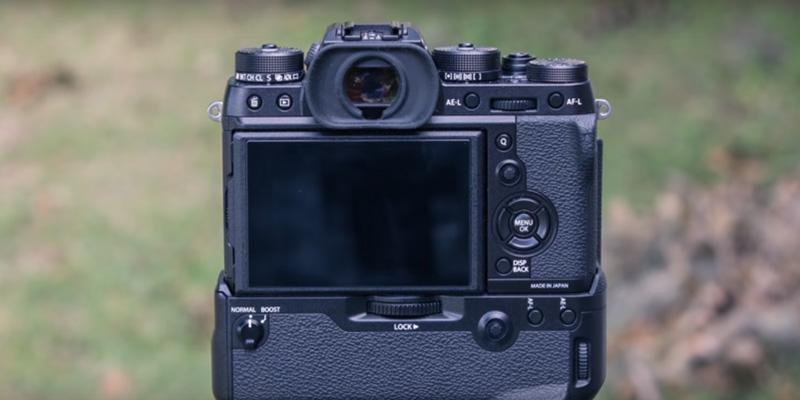
What's in It for Portraits?
Fujifilm X-T2 body boasts advanced X-Processor Pro digital microprocessor that is reportedly 4 times faster, compared with the previous X-T1 model. Thus, it can shoot at 8 FPS rate that may come in handy if you want to capture a person in motion or your subject is not a professional model. At the maximum ISO setting, the sensor may produce a fine-grain black-and-white photography, especially in low-light conditions.
Among other characteristics and shooting modes, that make it one of the best cameras for portraits, we want to highlight the Fujifilm's special ACROS filter feature. If you ever worked with Fujifilm Neopan 100 ACROS negative film, you might know that it delivers deep black colors with rich gradation in BW photos. By turning this feature on, you will get similar 135 film-quality pictures in up to 6000x4000 pixels resolution with the modern, easy-to-use mirrorless camera.
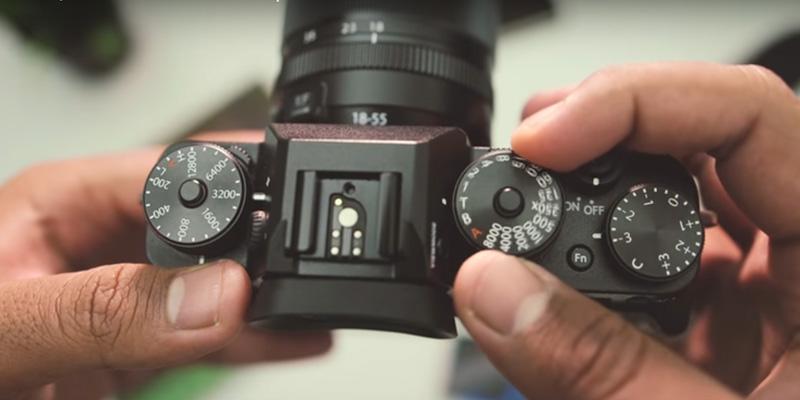
Fast and Steady
If you are a fan of handheld photography, you might like such an additional accessory for this camera as Fujifilm VPB-XT2 Vertical Power Booster Grip (not included). At first, some might think that this a common battery life extender that is attached to the bottom of the body via a threaded hole for a tripod. However, it has several elements that will take the camera's performance to the next level. The grip has a slot for its own memory card that can be used for data mirroring from the camera's card. Or you can use it as an extra storage after the main card is full. Furthermore, the booster grip improves FPS rate from 8 to 11 in high-speed continuous shooting by decreasing the shutter lag time.
Concluding, Fujifilm X-T2 mirrorless camera body is an excellent choice for amateur and professional photographers who want to obtain a compact-like portable camera with the option to change lenses for adapting it to various shooting styles and conditions. With the right lens and in ACROS mode, you can ultimately get stunning black-and-white photos and also capture just the right facial expressions, owing to the high-speed shutter.
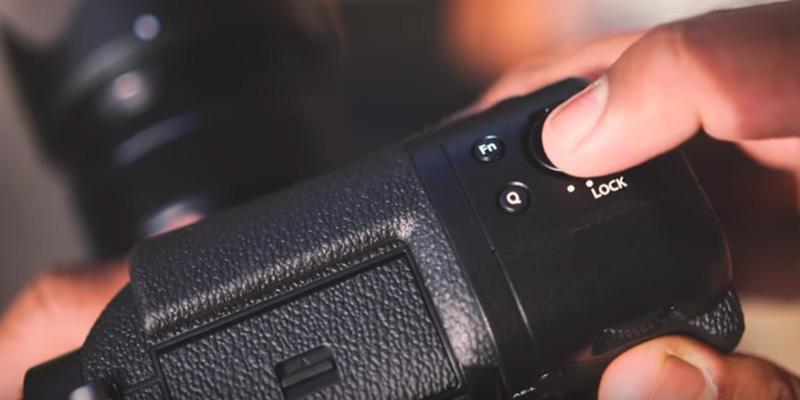
Additional Info
| Last updated price | $659.99 |
| Stock | In stock |
| ASIN | B01I3LNMAM |
What customers say about this product
Key Specs
Features
Connectivity
Imaging
Power
Display
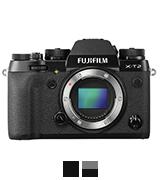
Canon EOS 80D
Professional Design
Despite the fact that mirrorless cameras are considered to be the successors of DSLR cameras, the later ones are far from being obsolete. On the outside, Canon EOS 80D Digital SLR Camera looks just like most of the bodies from the middle-range D-series. It features flip-out vari-angle 3" rear LCD screen and a smaller monochrome display on top, that is used for quick setting controls, while the main screen can be turned off to save the battery life. The mode dial on the left has a handy lock that prevents accidental rotation. In short, this body design and all of the control keys has an ergonomic design and placement. Yet, even without the lens, the camera is pretty heavy. Thus, some might want to use it with at tripod or a lightweight prime lens.
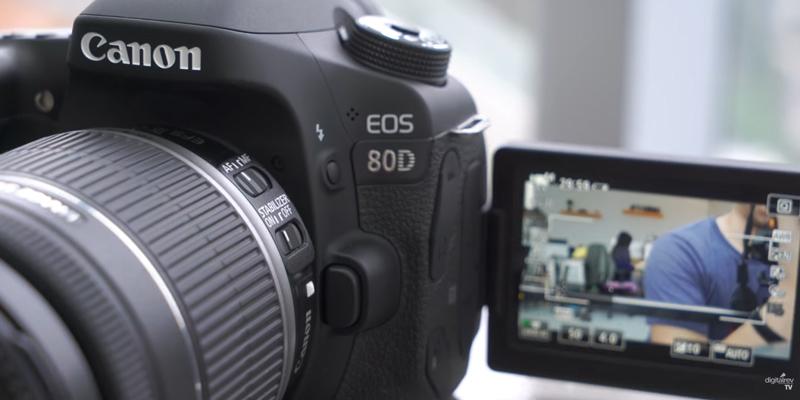
Easy Portraits
Compared to the previous model, the camera's got improved phase autofocus and more than twice the number of cross-type AF points. Thus, it can pinpoint the subject faster and simply better, which is especially noticeable in dim lighting. You can also try to set the focus by tapping the camera's touchscreen with your finger on the subject. It also has the anti-flicker feature for compensating the flickering light from electric lamps. The buffer can hold up to 100 jpeg and 25 RAW images in continuous shooting, allowing you to capture the smallest expression changes on your subject's face. To sum up, you can use the camera settings for indoor portraits in order to get crisp and sharp photos under any conditions.
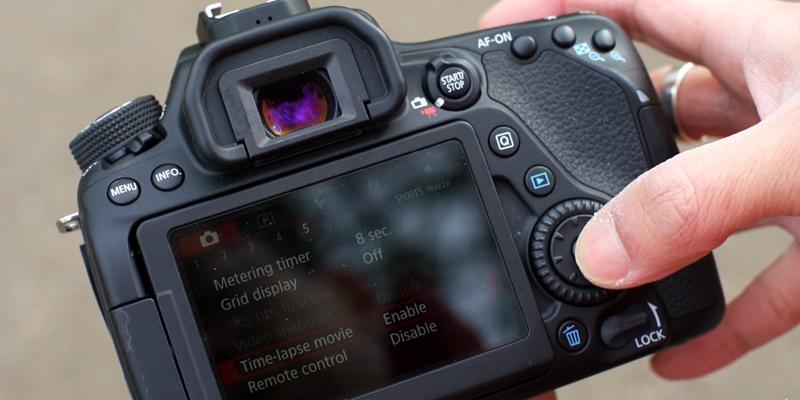
Usability and Compatibility
Another characteristic, that may interest both beginners and pros, is NFC and Wi-Fi support. So, now you can share your photos or upload them to the mobile or PC without taking the memory card out. Additionally, you can install the official mobile app to control your camera remotely. The wireless interface also comes in handy as the camera doesn't have any cables for uploading photos to the computer. However, it has HDMI and USB Mini-B type out for hooking it up to PC or TV.
Although Canon EOS 80D body has a crop sensor it may still be the best DSLR for portraits from the entry-level category. Thus, we advise combining it with the 35mm lens and with EF or EF-S mount for obtaining the optimal focal length, equivalent to the 50mm on Full-Frame cameras. As for the settings, you can select one of the preset modes like 'portrait', that blurs the out-of-focus zones in the photo, or 'Candlelight portrait' for retaining the candlelight colors. There's also the preset for shooting night portraits with the aperture priority for delivering more naturally looking night scene.
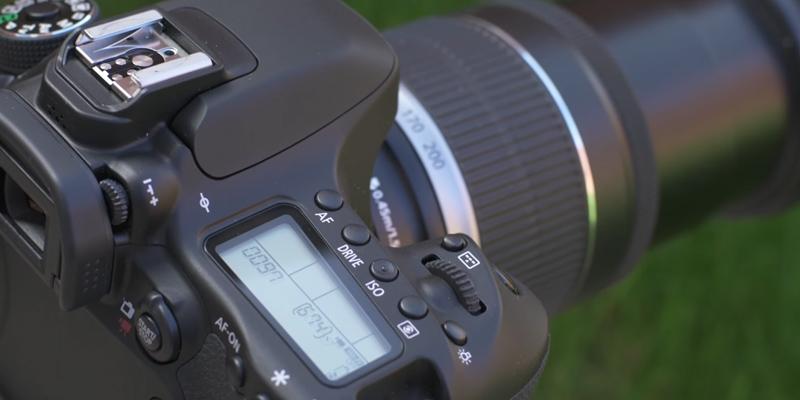
Additional Info
| Last updated price | $650.00 |
| Stock | In stock |
| ASIN | B01BUYK04A |
What customers say about this product
Key Specs
Imaging
Display
Features
Connectivity
Power
Size & Weight
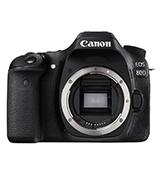
Nikon D3300
Launching Pad for Beginners
With the recent release of Nikon D3400, the price of the preceding D3300 model has reasonably dropped. Therefore, it might be an excellent time to switch from a compact camera to your first DSLR. With the main difference of having a bit longer battery life, there's no other major reason to pay more for the newest model, especially, from the portraitist's point of view.
In general, Nikon D3300 DSLR is an entry-level camera with a standard design. On the top right side, there are shutter-release and on/off buttons, a mode dial, and some other control functions. The rear side features optical viewfinder window and a non-tilt 3" LCD screen with good brightness. Although there are a lot of quick-setting buttons on the camera body, some of the options and effect modes can only be accessed through several menu entries. So, getting used to it might take some time. Luckily, there's a thorough manual included in the box to guide you through every step of configuration.
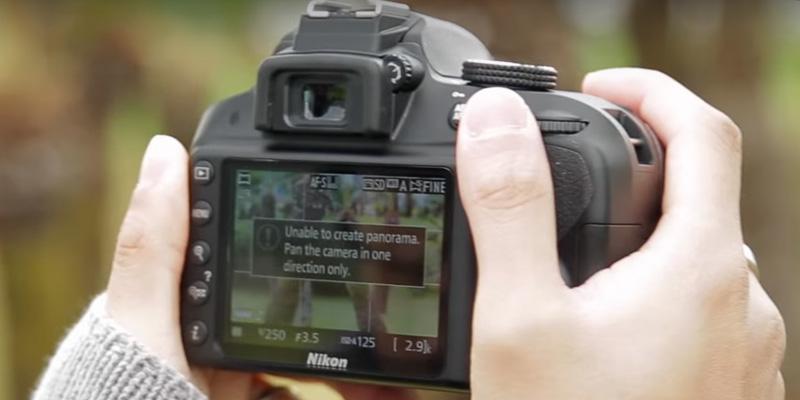
Aim and Shoot
Nikon D3300 kit comes in the set with Nikkor 18–55mm f/3.5–5.6G VR Lens. It's a zoom type with a variable focal length that will allow you to use it not only for portraits, but for scenery, nature, and other genres as well. The autofocus has 11-point autofocusing system for effective pinpointing the in-focus area, that is imperative for highlighting your subject in portrait photography. If you have at least some basic knowledge of photo editing, we totally recommend shooting in RAW format instead of JPEG. That way, you can retouch the photo more effectively and add more filters, layers to it, too.
In continuous shooting mode, the RAW format is limited by 5 FPS, and JPEG - 14 FPS rate. Keep in mind, that the photos are stored in the buffer first and require some time for the CPU to process them. In other words, you can obtain about 100 photos in JPG and around 35 in RAW format before the buffer is full and needs a pause.
As a side note, this camera body has no focusing mechanism. So, if you are going to buy new lenses for it, look for Nikon/Nikkor lenses with AF-S letters in the name - the indication of a lens-integrated focusing motor.
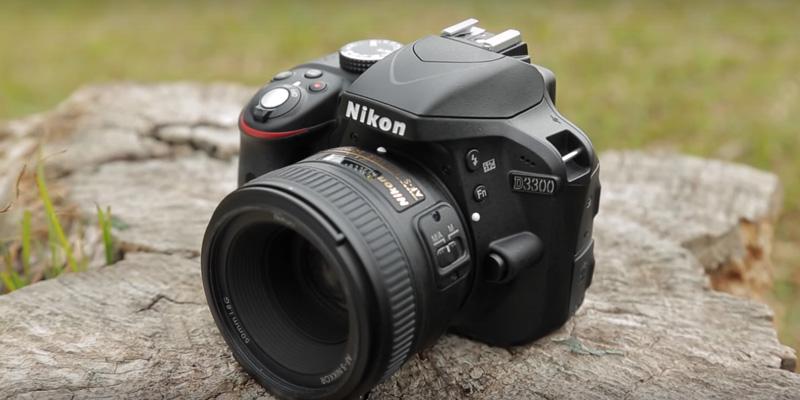
Modes for Portraits
Nikon D3300 Digital SLR Camera has several filters and options, dedicated to the portraiture. In the common 'Portrait mode', the photo tends to have more natural skin color with the softened background details for emphasizing the attention on your subject. 'Night portrait' mode's name speaks for itself. The best one, in our opinion, is the 'Low key'. Use it in dull lighting or even in the darkness for taking bold, texturised, noir-themed waist-ups and face portraits.
Concluding, this is a fine Nikon portrait camera for beginners to get into the details and small nuances of the genre and to improve their skills when a compact or phone's camera just don't have the required quality for portrait snapshots in various lighting settings.
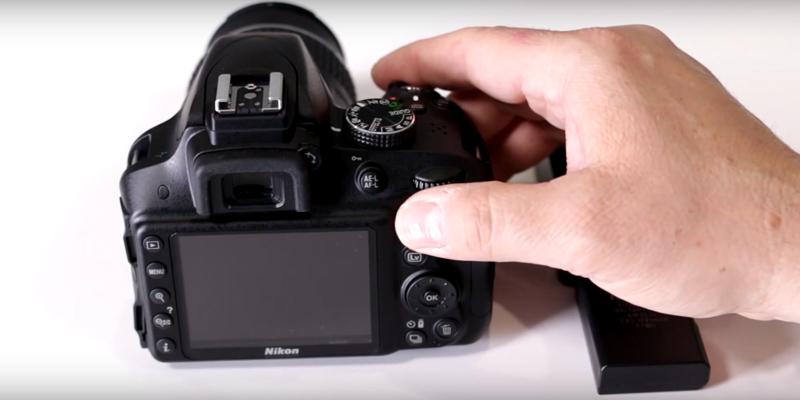
Additional Info
| Last updated price | $300.00 |
| Stock | In stock |
| ASIN | B00HQ4W1QE |
What customers say about this product
Key Specs
Imaging
Display
Features
Connectivity
Power
Size & Weight
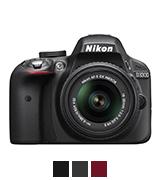
Canon EOS Rebel T5
Looking Where to Start? Start here
Canon EOS Rebel T5 DSLR, also known as Canon EOS 1200D, is an example of entry-level camera done right. It has 18 MP crop sensor with the ISO sensitivity ranging from 100 to 12,800, allowing you to shoot in low light without the flash. The controls are very straightforward. If you already own a Canon compact or DSLR, switching to Rebel T5 will take no time. 3" LCD screen is paired with the relatively large optical viewfinder. Also, it has a 9-point autofocus system.
Despite being an entry-level camera, it can offer its user various quick settings for taking quality photos under different conditions. Shooting in RAW format is useful for detailed retouch and post-processing in the image editor on a computer. What's more, a single battery charge is enough for taking around 500 photos - an optimal number for a quick photo session with friends and relatives or a walk in the park.
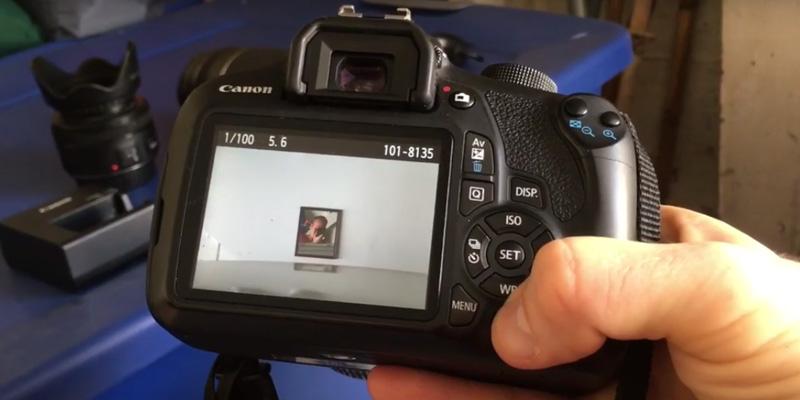
Capture the Moment
The camera comes in the kit with the Canon EF-S 18-55mm f/3.5-5.6 IS II Lens. It features an optical stabilization system that compensates all vibrations from trembling hands. If you want to take a photo of a dynamically moving subject - a child on the playground or a racing car, there's the AI Servo AF mode that can keep the focus on a target by pressing the shutter halfway down. In continuous shooting, the shooting speed is not too impressive - around 2-3 FPS, while the buffer can hold up to 69 images in JPEG and up to 6 in RAW before the speed drops down significantly, giving the camera time to process the photos. However, where it lacks in speed and performance, it more than makes up for it with functionality.
The AF mechanism is fast and very smooth for crisp and sharp in-focus area and blurred background details. We also recommend taking a few steps away from your subject and use a zoom at around 31mm focal length. That way, you'll get the focal perspective, equal to the 50mm on a Full Frame sensor.
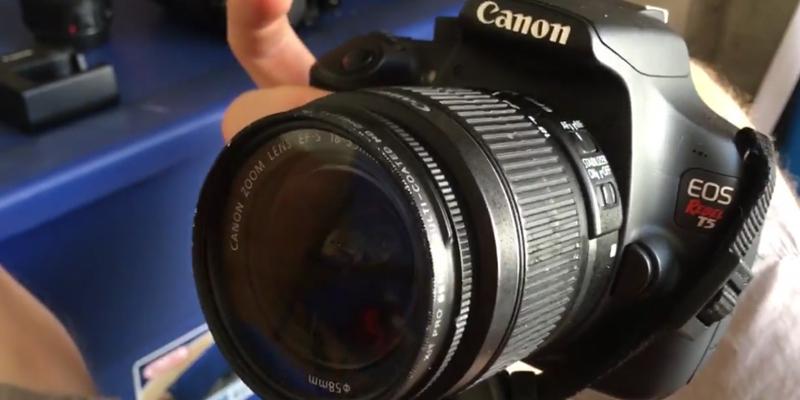
Up to Good Start
In addition to the standard 'Portrait' and 'Night portrait' modes, the Auto mode is worth mentioning as well. It is very sensitive here - the camera chooses the right settings for the scenery in most cases, making it an easy job for beginners to take great photos right away.
With the Creative Auto Mode, you can effectively blur the background and even change the depth of the field manually. This is helpful for taking crisp portraits with blurred surroundings. Another way around, you can manually select the different tone filters for your images like warm, soft, cool, brighter, and many others to tune the colors in accordance with the lighting and your creative vision.
Ultimately, this is a great multi-purpose camera, that comes at a very cost-effective price.
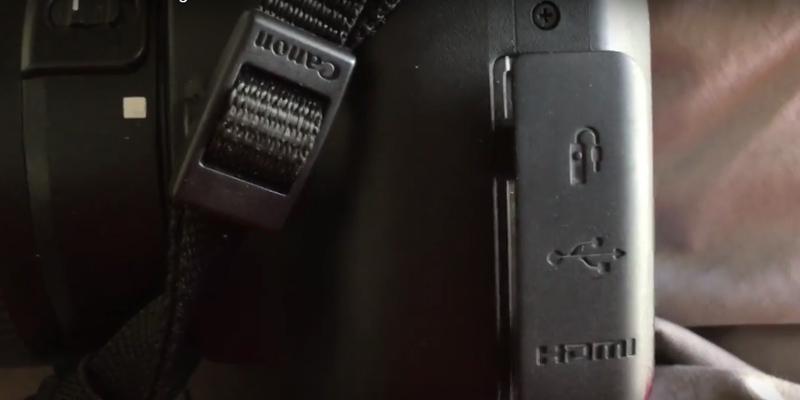
Additional Info
| Last updated price | $270.99 |
| Stock | In stock |
| ASIN | B00IB1BTWI |
What customers say about this product
Key Specs
Connectivity
Imaging
Display
Features
Power
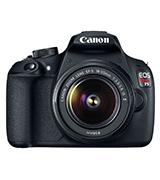
Sony Alpha a6000
Smoke and Mirrors
Sony Alpha a6000 Mirrorless Digital Camera is a successor of the Sony's NEX-series single-lens cameras. Thus, it can be paired with any of the Sony E-mount lenses. What's more, this kit is supplied with Sony 16-50mm f/3.5-5.6 OSS Lens that delivers from a wide-angle to a medium-telephoto field of view with the help of its adjustable focal length. The sensor has a crop factor of 1.5. In other words, to obtain a 50mm lens equivalent of Full-Frame, you'll need to set the zoom at around 33-34mm on Sony a6000. Furthermore, the camera is conveniently compact and lightweight, even with the lens. So, it might be a perfect camera to have with you on your travels or for shooting handheld portraits.
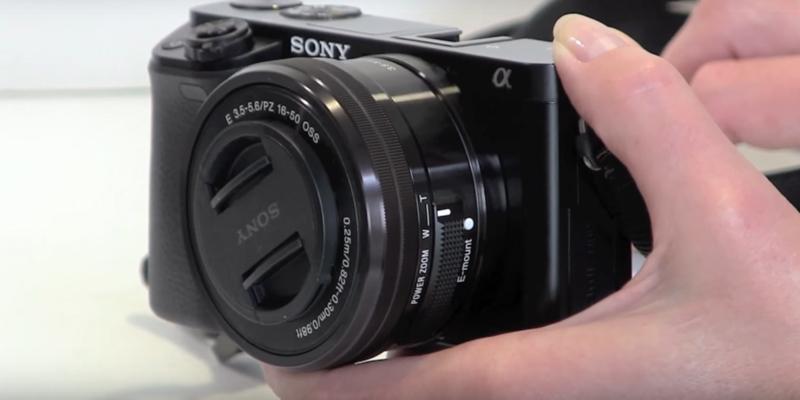
Look at Different Angle
Usability-wise, Sony Alpha a6000 controls are very ergonomic. We liked the option that enables AF automatically when you try looking through the viewfinder. The same sensor also auto-offs the larger LCD screen to save the battery, just like when you put a smartphone to your ear. Because of the mirrorless design, the camera doesn't have an optic viewfinder but features 0.39" electronic one. However, it boasts 100% coverage and 33° viewing angle, allowing you to see the high-contrast image with lots of details before you take a photo. What's more, 3" LCD screen can be tilted up and down at around 45°, but not to the left and to the right. The buttons, menu options, and configurations are straightforward and easy-to-understand. Even so, you can always use the in-camera guide by pressing FN and then C2 buttons on the menu entry to see the tips about what it does and how to use it.
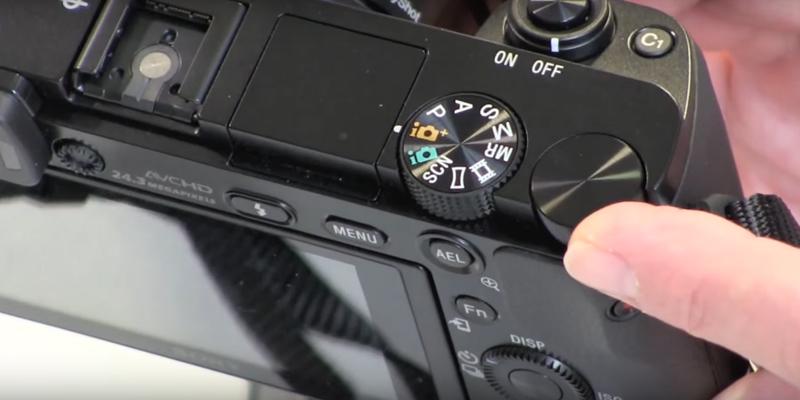
Zoom and Enhance
Although Sony Alpha a6000 Mirrorless Digital Camera doesn't exactly have a dedicated portrait mode, yet it has a Smile/Face detection that recognizes faces. Once it detects a smile, it automatically releases the shutter. Soft Skin Effect is excellent for smoothing skin features and instant beauty-retouching. The kit's Sony 16-50mm f/3.5-5.6 OSS Lens has a 7-blade diaphragm and produces smoothly rounded bokeh and softly blurred background, complimenting and highlighting the subject even further.
Another excellent feature is the Focus Magnifier. Basically, you can turn the option to enlarge the focus area to check out the small details or if the AF detected the right plane. The Auto Obj. Framing feature enables special face recognition tracking and, when you press the shutter, creates a cropped copy of the image with a supposedly better composition. It's not 100% successful all the time but can actually help you improve your skills by showing the alternative composition of the same scene.
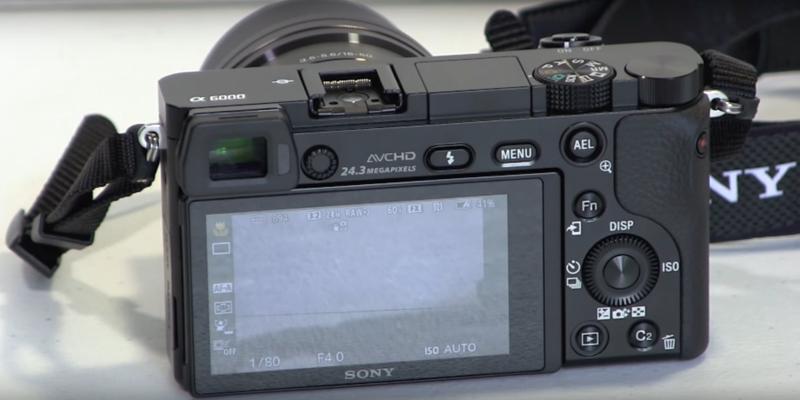
Additional Info
| Last updated price | $648.00 |
| Stock | In stock |
| ASIN | B00I8BICB2 |
What customers say about this product
Key Specs
Imaging
Display
Features
Power
Connectivity
Size & Weight
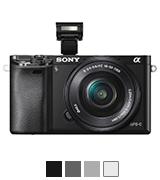
What is a Camera For a Portrait
"What is the best camera for portraits?" is one of the most frequent questions in any photography equipment stores and shops. However, the cameras may use different technologies and sensors. Also, you can shoot one object in many different ways. Thus, there's no set definition for the term 'portrait camera' because you can take photos in a unique manner. This is the beauty of photography in general. Still, there are several characteristics that are considered to be a standard for shooting portraits. For instance, one of them is the 50mm focal length that shows a viewing angle, similar to a human's eye, and delivers naturally looking face proportions. Another one is the maximum wide aperture. Simply put, the large aperture has a shallow focus area. When a person is in the focus, everything else will be blurred out, bringing the spotlight on the subject. Anyhow, we've tried to put together a thorough breakdown of several entry- and mid-range cameras, paying closer attention to their features that may help you shoot quality, professional-like waist-up and close-up portraits.
If you already own a DSLR or mirrorless camera, we can recommend you our guide of the best portrait lenses for cameras from different companies. Additionally, take a look at our pick of the best ring lights for shooting in photo studios.
What Features to Compare
Camera Type
Although many companies have produced a great number of fine compact cameras in recent years, most of the DSLR and Mirrorless cameras still offer superior image quality and are more adjustable to various situations, owing to the interchangeable lenses. Therefore, even some entry-level DSLR may be a better solution than most of the compact cameras. Yet, the lens is probably the most important detail that makes the difference. So, just choose the camera in accordance with your budget.
Focal Length and Aperture
We've already mentioned that the 50mm focal length is a considered to be a golden standard for portraiture. Yet, this is not a strict requirement, as you may take absolutely stunning portraits with a wide-angle or telephoto zoom lenses too. Still, if you are new to the photography, get a zoom lens with 18-55mm or even 18-85mm focal length. That way, you'll be able to explore different settings with just one lens.
Note, if you have an APS-C camera, you should consider a crop factor that influences the camera's focal length. As some cameras have different-sized sensors, you should check it individually for every camera. For example, to find the viewing angle on APS-C camera, equivalent to the 50mm on a Full Frame 35mm sensor, you should divide 50mm by the camera sensor crop factor number.
As for the aperture, the larger it is on a wider end, the brighter and more blur you may add to the background, drawing the attention to the subject of the photo. f/1.8 and f/2.8 apertures may be more suitable for head-shots, while f/3.5 and bigger - for waist-ups or full-body shots.
Functionality for Portraits
Most of the cameras feature a dedicated mode for portraiture. However, some of them may have more advanced settings for keeping natural skin tones in the photo, auto-retouching, red-eye filter, and many-many others. Bursting or continuous shooting mode is helpful for shooting moving subjects. Flip-out LCD screen may come in handy for both handheld shots and when taking photos in a studio with a tripod or monopod.
All-in-all, portrait photography is not an exact science. So, read our review of every camera and find out the best one for you.
Sources:
1. How to Choose a DSLR Camera, wikiHow.
2. Dianna Labrien How to Choose Your First DSLR Camera, Engadget. August 29, 2016.
3. Bjorn Petersen DSLR Camera Buying Guide, B&H. January 2015.
4. Dann Albright 6 Things to Consider When Buying Your First DSLR Camera, MakeUseOf. June 15, 2016.
5. 14 portrait photography tips you'll never want to forget, TechRadar. January 2017.
6. Dani Diamond 7 Tips Your Camera Manual Never Told You About Portrait Photography, Fstoppers. November 13, 2014.
7. Amadou Diallo What Camera Should I Buy? The Wirecutter. March 18, 2016.
8. Andrew S. Gibson How to Choose the Perfect Portrait Lens, Digital Photography School.
9. Anton Orlov Selecting a Portrait Lens With Correct Focal Length, PetaPixel. January 4, 2016.
Popular Comparisons
































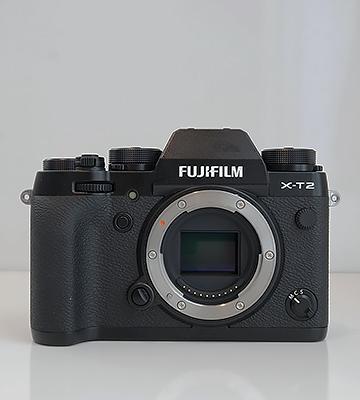
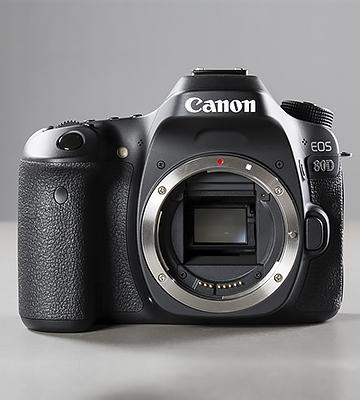
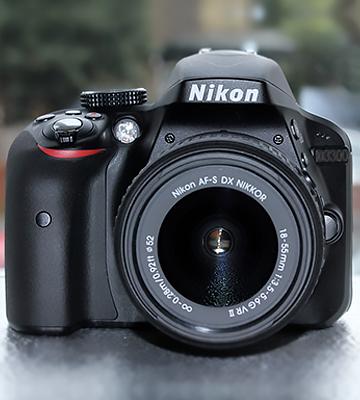
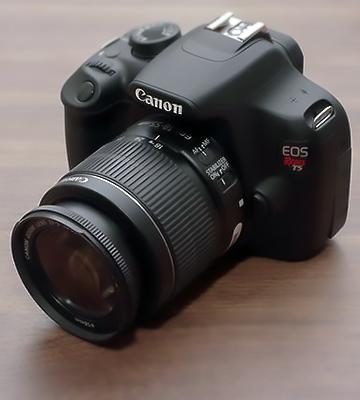
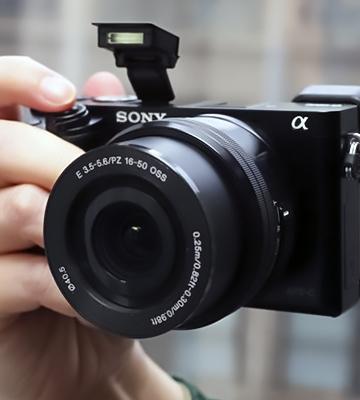
Your comment was successfully sent
Error! Please try again later